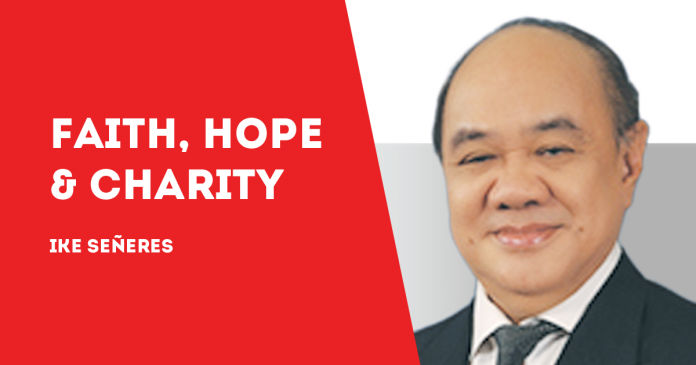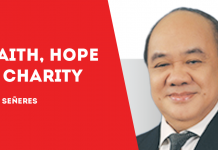
POVERTY reduction is a cycle that starts with wealth creation. Or to be more precise, it starts with livelihood generation.
Generally speaking, livelihood generation means either opening more new jobs or starting new enterprises. In a manner of speaking, it could be said that self-employment which is actually a business could also be considered as a job. Either way or both ways, it would end up with wealth creation.
First things first, I would like to say over and over again that poverty reduction is not the same as poverty alleviation. I am saying this because even up to now, there are many government agencies and public officials who are passing off poverty alleviation programs as poverty reduction, and that is either a misconception or a deception. Perhaps what they mean is that poverty alleviation reduces the pain of poverty, but still, it does not remove people from the numbers of the poor.
Further back, the cycle of poverty reduction actually begins with education. With good education, our graduates could either get a job or go into a business. In between that however, they would also need good health and a safe environment, because their jobs would be no good if they get sick or if they safety is threatened by an unsafe environment. On top of it all, they would need equal access to justice, because without equal justice, they could lose their jobs and their businesses.
As I see it, the entire cycle of poverty reduction fits into the JEWEL framework that I proposed, an acronym for justice, environment, wellness, education and livelihood. Other than that, it could be said that the other basic needs such as food, water, energy and fuel could be acquired if our people would have the income that is necessary in order to pay for these goods and services.
On a more positive note however, it is also possible that these four goods and services could be provided for free for everyone in communal communities that are governed by self-help principles.
In the many years that I have been involved in the livelihood advocacy, I have long concluded that the key to success is really marketing. It is relatively easier to start production as a project, but it is harder to sustain the project if the goods and services would have no markets.
That said, it is actually more practical to start product development with a specific market in mind, preferably with a specific customer or buyer in mind. This is one area where the private sector could come in and help, because they have the expertise to help in the development of new products, and they could possibly become the buyers themselves.
The Human Development Index (HDI) measures the performance of countries in terms of the standards of living, which roughly translates into the measurement of poverty reduction as well. It also measures the literacy rate and the mortality rate, which also translates into the measurement of education and wellness programs.
The Millennium Development Goals (MDGs) also indirectly measures national performance in wellness, education and livelihood, and it also directly measures national performance in justice and environment.
All told, the combination of HDI and MDGs would cover all of the JEWEL programs. Aside from these two measures, the United Nations has come up with a newer measure called the Multi-Dimensional Poverty Index (MPI), which gives a better and clearer picture of how the victims of poverty are deprived of specific human needs.
As it is now, no one is apparently measuring HDI, MDGs and MPI at the local level. Since this is simply a database challenge, I think it would not be difficult to implement a system that would monitor local performance in these three measures.
With so many advances in internet and mobile technologies, it is now possible to come up with a scorecard system that will grade the performance of local government units in all of the JEWEL programs. This system could become very democratic if we allow anyone who has an internet or mobile device to rate their own local officials, let’s say from a low passing grade of 75 to the highest grade of 100. In order to prevent malicious elements from abusing this system, all those who will be allowed to grade should be pre-screened and pre-registered.
The Local Government Code (LGC) allows the formal and official participation of non-government organizations (NGOs) in the Local Development Councils (LDCs) at the barangay, municipal, city, provincial and regional levels./PN

